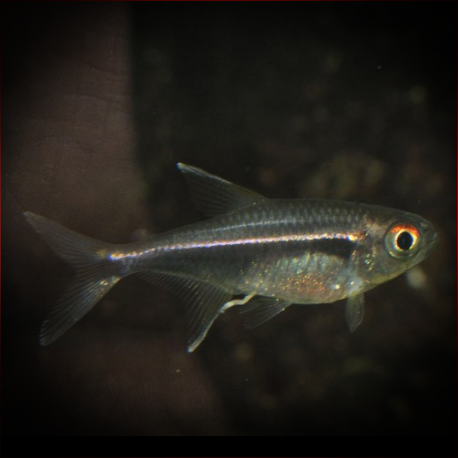More info
Datasheet
General Description
Hyphessobrycon eschwartzae is a distinct species within the Characidae family, characterized by specific traits such as the number of anal-fin rays, dentary teeth, premaxillary teeth, scales in the lateral line, and maxillary teeth. It is a member of the H. heterorhabdus-group, sharing similar features with closely-related species such as H. heterorhabdus and H. amapaensis.
Aquarium Setup
The optimum aquarium setup for H. eschwartzae should ideally mimic its natural habitat in the Río Madre de Dios watershed of southeastern Peru. A tank size of at least 20 gallons, with plenty of live plants and driftwood for hiding spots, is recommended. The water temperature should be maintained between 72-78°F (22-26°C), with a slightly acidic to neutral pH level (6.0-7.0) and soft to moderately hard water (5-15 dGH). For more detailed information on specific requirements, refer to the table below.
Behaviour
In terms of behavior, H. eschwartzae is a peaceful schooling fish that thrives in the company of its own species or other non-aggressive tankmates. These tetras are known to be active swimmers, especially in well-planted aquariums where they can dash in and out of vegetation. They exhibit typical tetra behavior and tend to be non-territorial.
Feeding and Diet
Hyphessobrycon eschwartzae is an omnivorous species, accepting a wide range of foods in the aquarium. Their diet can consist of high-quality flake food, frozen or live daphnia, bloodworms, brine shrimp, and small insects. Offering a varied diet ensures that they receive all the necessary nutrients for optimal health and coloration.
Reproduction & Dimorphism
Sexual dimorphism in H. eschwartzae is evident, with males possessing bony hook-like structures on the anal fin rays, while females lack these hooks and are generally heavier-bodied than males. The species engages in typical egg-scattering reproduction, with females releasing adhesive eggs among the plants. Providing fine-leaved plants or a breeding mop is beneficial for the successful hatching of the eggs.
Habitat and Distribution
The distribution of H. eschwartzae is limited to the Río Madre de Dios watershed in the Madre de Dios region of southeastern Peru. Specifically, the species has been found in the Tambopata National Reserve and areas north of Puerto Maldonado. The type locality for H. eschwartzae is at La Cachuela, Río Madre de Dios, Tambopata, Madre de Dios, Peru, at coordinates 12°16'38.2"S, 69°09'8.12"W.

